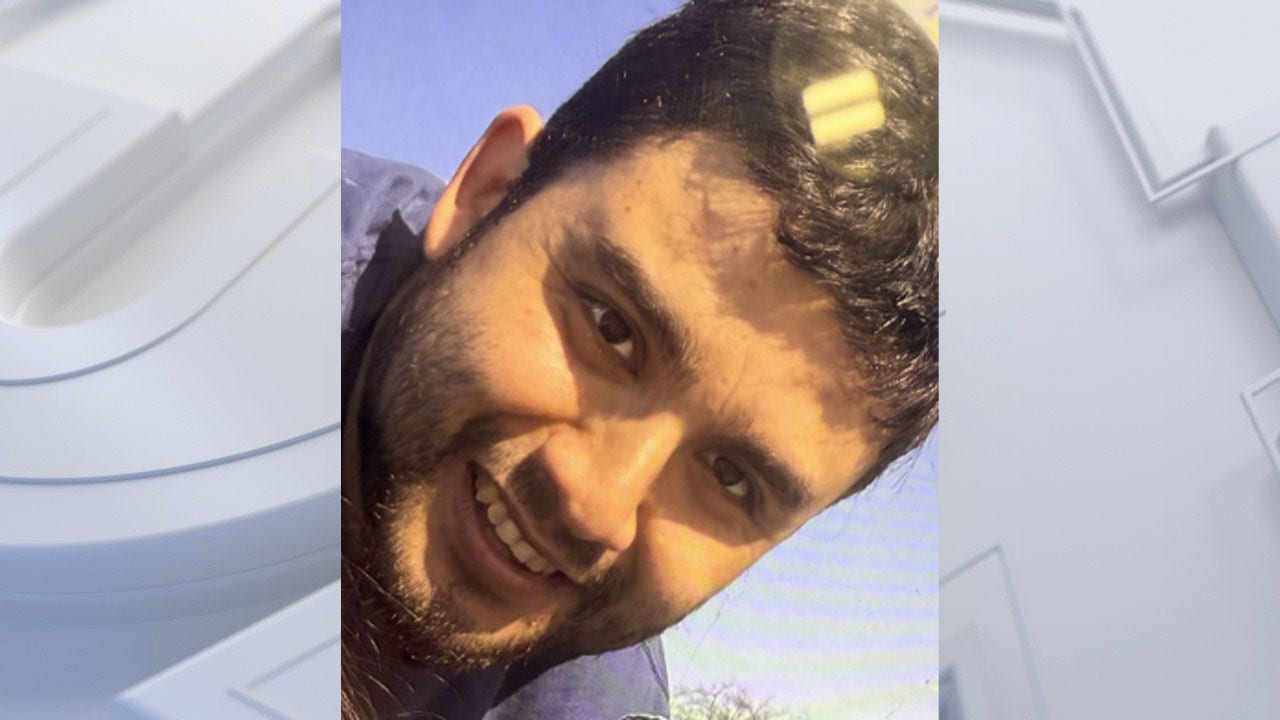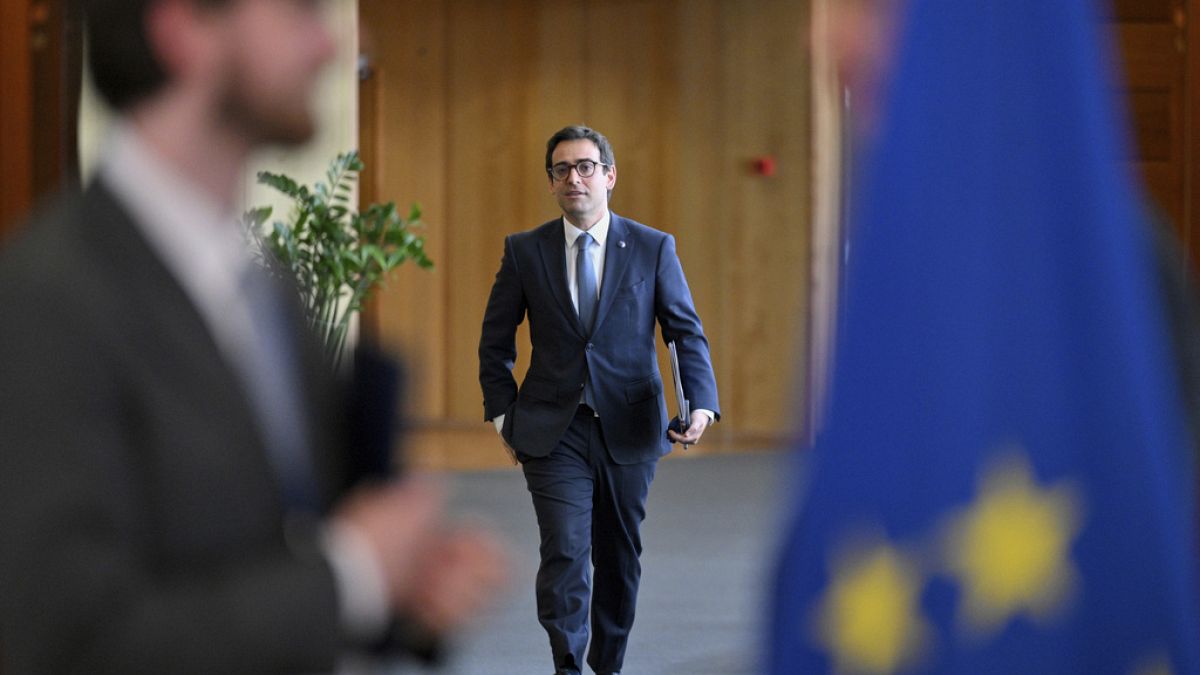For many months now, the city of Milwaukee has been grappling with a lead poisoning crisis that has forced at least four schools to temporarily close and dozens more to undergo rigorous inspections.
Milwaukee, WI
Trump Rally Tells Him Not to Join RNC Debate in Milwaukee

As he faces pressure from fellow candidates and party leaders to commit to joining the first Republican primary debate in August, current frontrunner Donald Trump put the question to his audience at an Erie, Pennsylvania rally Saturday night. The response: a chorus of “No’s.”
“Am I going to stand up there by guys with zero, one, two, three percent, maybe four, and have them ask me hostile questions?” Trump asked.
The first debate is scheduled to take place on August 23 in Milwaukee, Wisconsin. According to the rules set out by the Republican National Committee, candidates must demonstrate over 40,000 unique donors with at least 200 donors in 20 unique states, in addition to polling over 1% in three qualifying national polls (or two national and one early nominating state poll) to make the stage. As of last week, seven Republicans, including Trump, had cleared the hurdles.
For the past several months, Trump has repeatedly suggested that he’ll skip the debate, arguing that his gargantuan lead over the competition gives him no reason to show up. FiveThirtyEight’s polling average currently has Trump leading Ron DeSantis by nearly 40 points, with only Desantis and Vivek Ramaswamy notching above five points.
Trump told the crowd he knew they’d want him to join the state “for entertainment’s sake.” “Now, put on your political cap, right,” he said. “We have to save our country. We have to win.”
In recent weeks, Trump has faced growing pressure from his competitors and other party leaders to join the debate stage. DeSantis, whose polling has slid of late, has called on Trump to “show up and make his case and answer questions like the rest of us.” Earlier this month, RNC Chair Ronna McDaniel told Fox News that it would be a “mistake” for Trump to miss the debates. Along with longtime Trump advisor David Bossie, McDaniel met with Trump at his Bedminster, New Jersey residence last Monday to encourage him to join.
A number of Fox News hosts, including Steve Doocy and Brian Kilmeade, have also begun making on-air pleas, The Washington Post reported last week. “If I were you, I’d keep that center podium warm,” former Trump adviser Kellyanne Conway told Fox News host Martha MacCallum on Monday. Along with Bret Baier, McCallum will co-host the Milwaukee debate. “I think President Trump will keep everyone in suspense,” Conway said.
“We’ll see what happens,” Trump said Saturday. “I haven’t made a commitment one way or the other.”

Milwaukee, WI
American kids are being poisoned by lead. Trump is letting it happen.

It began on January 13, when Milwaukee first notified parents at one grade three to five school that a child had tested positive for high levels of lead in their blood. Local health officials determined the lead exposure did not occur at the child’s home, which left their school as the obvious culprit.
City investigators found chipped lead paint and lead-laden dust throughout the school building; press and government reports indicate that the school district has struggled to keep up with paint maintenance requests, due to a lack of funding and manpower. Local officials soon realized they had a big problem on their hands, as the vast majority of the city’s school buildings (roughly 125 out of 150) were built before 1978, when lead paint was banned.
Lead, a dangerous neurotoxin that can lead to development problems in children after prolonged exposure, has now been detected in at least nine public schools, and at least four students have tested positive for high lead levels in their blood. So far, no children have been hospitalized for acute lead poisoning, which can be life-threatening, but the affected kids continue to be monitored. Several buildings have been temporarily closed so workers can do a deep clean. Milwaukee has been inspecting all of its public schools for lead, with the goal of completing the review by September.
Normally, cities navigating such a crisis could depend on the Centers for Disease Control and Prevention for federal support. When the lead poisoning was first detected in January, at the tail end of the Biden administration, city health officials were immediately in contact with the CDC environmental health team, which included several of the country’s top lead poisoning experts, Milwaukee health commissioner Mike Totoraitis told me. A group of federal experts were planning a trip to the city at the end of April.
But not anymore. In early April, the Trump administration denied Milwaukee’s request for support because there was no longer anybody on the government’s payroll who could provide the lead poisoning expertise the city needs.
On April 1, the lead exposure team within the CDC’s National Center for Environmental Health was laid off as part of Health Secretary Robert F. Kennedy Jr.’s massive restructuring of the federal health department. The planned trip was canceled, and no federal officials have stepped foot in Milwaukee since to aid in the response.
“We were talking to [the federal experts] multiple times each week,” Totoraitis said, “before they were let go.”
Milwaukee has pushed ahead with its own inspection and free blood testing clinics. The city reported on May 13 that it had replaced 10,000 lead water service lines, in an attempt to remove another possible source of exposure for local children. But they still have 55,000 more left to go, and local officials have said they would need state or federal funding to finish the job. (It is estimated to cost the city about $630 million.)
Ordinarily, Totoraitis said, the CDC experts would serve as the city’s subject matter experts, guiding them through their epidemiological investigations. Federal officials are especially adept at the detective work that can determine whether a child was exposed at home or at the school. Milwaukee officials had recent experience with lead exposures in homes but not in schools; they were relying on federal expertise to interpret lead dust levels that were found during the school inspections. Without them, they’ve been left to navigate a novel and dangerous health threat on their own.
“They were there for that sole purpose of having some of the best subject matter expertise on lead poisoning, and it’s gone now,” Totoraitis said. “Now we don’t have any experts at the CDC to reach out to.”
In this uncertain new era for public health, Milwaukee’s experience may become all too common: a city left to fend for itself amid an emergency. What in the past might have been a national scandal could become all too routine.
This is what happens when the federal government won’t respond to a health crisis
When I spoke with Totoraitis, he was already contemplating the next public health problem he would have to deal with. “If we have a new emerging health issue, that I don’t have internal expertise on and neither does the state, we don’t have anyone to call now,” Totoraitis said. “That’s a scary endeavor.”
He can’t be sure what kind of help he will be able to get from the federal government as the restructuring at the US Department of Health and Human Services continues. The department just rehired hundreds of health workers focused on workplace safety, but other teams, including the lead team, have not been brought back.
The turmoil makes it harder for local officials to keep track of which federal experts are still on staff, where they are located, and who has actually been let go. But the message is clear: President Donald Trump and his senior deputies want state and local governments to take on more of these responsibilities — without a helping hand from the feds.
The US public health system has been set up so that the state and local health departments are the front line, monitoring emerging problems and providing personnel in a crisis. The federal government supplies insights that state and local officials probably don’t have on their own. That is what Totoraitis was depending on; Milwaukee was inexperienced with lead exposures in large public buildings before this year’s emergency. (One of the laid-off CDC scientists has since sought to volunteer to help Milwaukee, as Stat recently reported; the person told me they were hoping to help with community engagement, which federal officials would usually assist with.)
Health crises happen all the time. Right now, there is a small tuberculosis outbreak in Kansas; a Florida town experienced the unexpected spread of hepatitis last December. A dozen people have been hospitalized in a listeria outbreak. And the US is currently facing its largest outbreak of measles in decades, with more than 1,000 people sickened. At one point, local officials said that the federal government had cut off funding for the outbreak response as part of a massive clawback of federal funds at the end of March, although the CDC has since sent additional workers to West Texas where the outbreak originated.
There used to be little doubt the federal government would step up in these scenarios. But Totoraitis warns that Milwaukee’s experience of the past few months, left to fend for itself in an emergency, could soon be repeated elsewhere.
“Let’s say next year this time, St. Louis is in a similar situation — they could call us, but we don’t have the bandwidth to consistently support them,” Totoraitis said. “This unfortunately is a great example of how quickly changes in the federal government can affect local government.”
Kids are being poisoned by lead. Trump is letting it happen.
Kennedy, Trump, and Elon Musk’s Department of Government Efficiency gleefully cut 10,000 jobs from US health agencies this spring. The cost of those losses will be felt every time a city is confronted with an unexpected health threat. Today, in Milwaukee, families are facing the fear and uncertainty of lead exposure — and they know federal help isn’t coming. As one Milwaukee mom told ABC News recently: “It really sends the message of, ‘You don’t matter.’”
Milwaukee, WI
Erin Shirreff photography at Milwaukee Art Museum

The Milwaukee Art Museum presents the most comprehensive exhibition in a decade of works by Erin Shirreff, a highly regarded contemporary artist at the forefront of sculpture, photography, and video. Erin Shirreff: Permanent Drafts showcases over 40 recent works, including installations specific to the Milwaukee Art Museum, and will be on view May 30 through August 31, 2025, in the Museum’s Herzfeld Center for Photography and Media Arts.
Erin Shirreff (b. 1975) creates boundary-crossing art exploring the gap between images and the things they picture. Trained as a sculptor, Shirreff understands photography as a significant, but imperfect means of conveying three-dimensional objects. Her work focuses on the reproductions through which we often access art, inviting audiences to consider how each of us sees and interprets the world around us. Shifting across time, material, and dimension, her art rewards in-person engagement and slow, close looking.
“While photographs increasingly lose trust as conveyors of knowledge, Erin Shirreff’s work, which dwells in the place between image and object, has only become more relevant,” the exhibition’s curator Kristen Gaylord, Herzfeld Curator of Photography and Media Arts, said. “I have long admired her thoughtful approach to the generative potential of representation, and it has been a joy to collaborate with her in bringing this wide-ranging presentation of her recent work to Milwaukee.”
The exhibition will be installed in the Herzfeld Center for Photography and Media Arts, the Museum’s dynamic space dedicated to photography, film, video, and light installations. Since 2015, when it was established, the Herzfeld Center has been home to cutting-edge exhibitions that feature artists who shape, push the boundaries of, and expand photography and media arts.
“Erin Shirreff: Permanent Drafts continues the Museum’s exploration into the expansive world of photography, beyond the traditional print to the medium’s larger role in art and society,” Elizabeth Siegel, Chief of Curatorial Affairs, said.
Hear from the artist herself on Thursday, August 7, when Erin Shirreff will present an artist talk in Lubar Auditorium, and engage with Milwaukee experts on Thursday, August 28, at the Haberman Local Luminaries program taking place in the Herzfeld Center.
About Erin Shirreff
Erin Shirreff’s work has been featured in recent solo exhibitions at SITE Santa Fe (2024); Clark Art Institute, Williamstown, MA (2021–22); San Francisco Museum of Modern Art (2019); and Kunsthalle Basel, Switzerland (2016). A survey exhibition of her photography, sculpture, and video was co-organized by the Institute of Contemporary Art, Boston, and the Buffalo AKG Museum, New York, in 2015–16. Her work is included in the permanent collections of the Centre Pompidou, Paris; Los Angeles County Museum of Art; Metropolitan Museum of Art, New York; Museum of Modern Art, New York; Solomon R. Guggenheim Museum, New York; and Yale University Art Gallery, New Haven; among others.
Shirreff was born in 1975 and lives and works in Montreal.
Milwaukee, WI
Milwaukee man critically missing, last seen near 12th and Lapham

MILWAUKEE – The Milwaukee Police Department requested the public’s help to find critically missing 29-year-old Saddai Azamar Pena. He was last seen near 12th and Lapham on Friday afternoon, May 16.
Police described Azamar Pena as 5-foot-10 and 180 pounds with brown eyes and a shaved head. He was driving a black Honda CR-V with Wisconsin license plates: ARC-9791.
FREE DOWNLOAD: Get breaking news alerts in the FOX LOCAL Mobile app for iOS or Android
Anyone with information on Azamar Pena’s whereabouts is asked to call Milwaukee Police District 2 at 414-935-7222.
The Source: Information in this report is from the Milwaukee Police Department.
-

 Austin, TX1 week ago
Austin, TX1 week agoBest Austin Salads – 15 Food Places For Good Greens!
-

 Politics1 week ago
Politics1 week agoPresident Trump takes on 'Big Pharma' by signing executive order to lower drug prices
-

 News5 days ago
News5 days agoAs Harvard Battles Trump, Its President Will Take a 25% Pay Cut
-

 Business1 week ago
Business1 week agoIn-N-Out Burger adds three new California locations to list of 2025 openings
-

 Politics1 week ago
Politics1 week agoDHS says Massachusetts city council member 'incited chaos' as ICE arrested 'violent criminal alien'
-

 News1 week ago
News1 week agoWhy Trump Suddenly Declared Victory Over the Houthi Militia
-

 Technology1 week ago
Technology1 week agoMexico is suing Google over how it’s labeling the Gulf of Mexico
-

 Politics5 days ago
Politics5 days agoRepublicans say they're 'out of the loop' on Trump's $400M Qatari plane deal
















